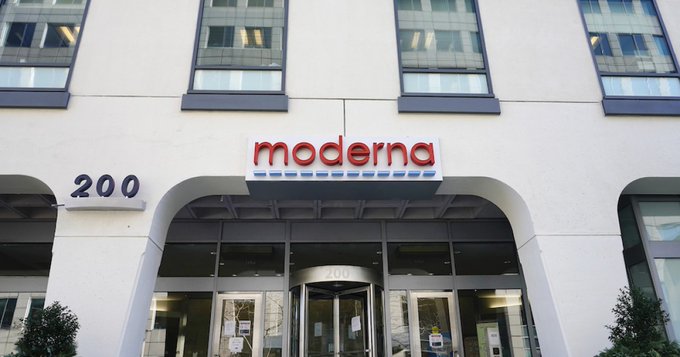Moderna vaccine set to begin distribution as soon as FDA gives green light

A panel of outside advisers to the US Food and Drug Administration overwhelmingly endorsed emergency use of Moderna Inc’s coronavirus vaccine, virtually assuring a second option for protecting against COVID-19 for a pandemic ravaged nation, Reuters reported.
The committee voted 20-0 with one abstention that the benefits of the vaccine outweigh its risks in people aged 18 and older, one week after the same panel backed a similar vaccine from Pfizer Inc and German partner BioNTech SE, leading to an FDA emergency use authorization (EUA) a day later.
The FDA is expected to grant the EUA as early as late Thursday or Friday, providing another ray of hope to a nation that has lost more than 300,000 lives to COVID-19 — including a one-day high of 3,580 deaths on Wednesday — while record numbers of patients threaten to overwhelm US hospitals and healthcare workers.
“To go from having a (genetic) sequence of a virus in January to having two vaccines available in December is a remarkable achievement,” said Dr. James Hildreth, CEOof Meharry Medical College, who voted to recommend the vaccine for emergency use.
The one abstention came from Dr. Michael Kurilla, who works at the National Institutes of Health and felt blanket authorization for those 18 and older was too broad, Reuters added.
“I’m not convinced that for all of those age groups the benefits do actually outweigh the risk. And I would prefer to see it more targeted towards people at high risk of serious and life threatening COVID disease,” he said in the Reuters report.
The Moderna vaccine is set to begin distribution as soon as the FDA gives the green light.
Health and Human Services Secretary Alex Azar told CNBC on Thursday that 5.9 million doses have been allotted for states and large cities and were ready to ship nationwide.
The vaccines are not a panacea, however, as they will take months to roll out to a nation where the virus is running rampant and public health measures such as social distancing and mask wearing are being rejected by large parts of the population.
Unlike Pfizer’s vaccine, which comes with complex distribution challenges due to its need to be shipped and stored at -70 Celsius (-94 F), Moderna’s vaccine does not require specialized ultra-cold freezers or vast quantities of dry ice, making it easier to supply rural and remote areas.
The company said on Thursday it has expanded the handling guidance for the vaccine to allow it to be moved locally in a liquid state at standard refrigerated temperatures. In some cases, Moderna said, this could be the only practical way to move it to clinics or remote locations.
US officials have said they expect to have 40 million doses of the Pfizer/BioNTech and Moderna vaccines by the end of the year — enough to inoculate 20 million people. Both vaccines were about 95 percent effective at preventing illness in pivotal clinical trials with no serious safety issues.
The first wave of doses are expected to be earmarked for healthcare workers who treat COVID-19 patients and vulnerable residents and staff of nursing homes.
